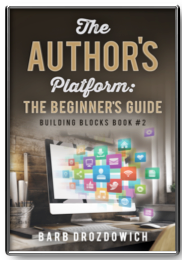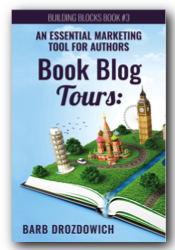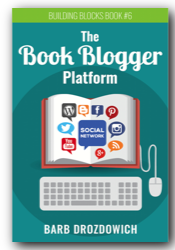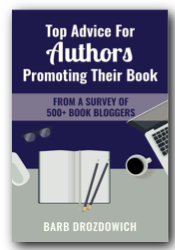Barb Drozdowich's Blog, page 35
May 25, 2016
The 2016 Social Media Image Sizes Cheatsheet (infographic)
Here’s today’s infographic! I can never remember the sizes of the various graphics I need for the social media platforms. Because of this, I’m always happy to run across a recent one that I can post.
I found this latest one here. Please feel free to drop by and read the whole post!

The post The 2016 Social Media Image Sizes Cheatsheet (infographic) appeared first on Bakerview Consulting.
May 18, 2016
How to Promote your Blog (Infographic)
I love this infographic! This is a great summary of the steps involved in promotion your blog post. All the information you need in on place!!
I found this infographic here
The post How to Promote your Blog (Infographic) appeared first on Bakerview Consulting.
May 11, 2016
Top 3 – 5 SEO mistakes that people make
Today I’m sharing another gem from my idol Matt Cutts from Google. Matt may be a super smart guy, but he has the gift of being to explain complicated things in everyday language. And it is certainly a gift!
Take a few minutes and listen to what he has to say about SEO mistakes that people/companies make and see if you need to make any corrections to your site.
And I promise this video is at the right level for everyone to understand!
The post Top 3 – 5 SEO mistakes that people make appeared first on Bakerview Consulting.
May 4, 2016
Social Media Cheat Sheet (Infographic)
Today I want to share a little infographic that I stumbled on in my reading. I like graphics that succinctly present information in a snapshot. This infographic covers all the major social media platoforms – what they are used for and how to start on each one. Perfect for the beginner.
This infographic was created by Flowtown
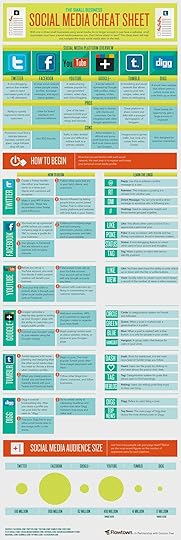
The post Social Media Cheat Sheet (Infographic) appeared first on Bakerview Consulting.
April 27, 2016
Social Media Work Distractions (Infographic)
How many times are you interrupted at work? We used to complain about phone interruptions but there are so many more interruptions in the average day.
Hope you enjoy this interesting infographic – happy HumpDay!
P.S. if you read all the way to the bottom, you’ll see the question – How often do you unplug? What’s your answer?
The post Social Media Work Distractions (Infographic) appeared first on Bakerview Consulting.
April 24, 2016
What to look for in technical help
Today we are going to talk about a couple of things. First off, I want to introduce you to a couple of friends – Anne R. Allen and Ruth Harris. You can find their blog here.

I had the honor of working on Anne’s site this past week. I know, you are saying I’m frequently working on sites – and that’s true – but I’ve been a fan of Anne’s for a long time. I’ve probably been reading her blog for 6 or more years. Anne and Ruth have the gift of cutting through the crap and calling a spade a spade. They do it in a way that educates and never belittles authors on the lower end of the steep learning curve that authors are expected to climb. At the same time they have something for every skill level.
I actually quoted from one of Anne’s blog posts in my first book. The blog post I referenced was The New Gatekeepers: How to Query a Book Review Blogger. This post was from 2011 and even back then, Anne understood how important book bloggers can be to an author’s career. I religiously read Anne and Ruth’s blog posts every Sunday. Some weeks I’m more interested in the subject matter than others, but I always find some pearls of wisdom to share with friends.
This brings up our next topic: Technical Help

Anne and Ruth have been dealing with a problem web designer over the last few months – resulting in a huge amount of stress being added to their lives. Sadly, these things happen.
In the next few weeks, I’m going to create a checklist for authors looking for technical help, but for now….
Authors are a niche group with needs that most web designers don’t understand!
Things like Goodreads review widgets and Amazon author pages are outside the realm of the usual business world.
As I say in my books, just because your neighbor’s son is pretty handy with a computer, doesn’t mean he is qualified to help you.
Here are some key things to think about:
any technical help you approach should have experience with authors IMHO
any technical help you approach should be able to offer references of happy clients that had similar needs to yours
anyone who offers to monetize your blog so that THEY can make money is a red flag
any technical help should be able to create a site that matches your skill level – don’t be talked into a site that is so complicated that you can’t possibly manage it. There is nothing wrong with getting help with maintenance type activities to free you up to write, but you should be able to post and update content yourself.
As I frequently say – authors seem to have turned into a cottage industry and people are coming out of the woodwork to take advantage of them. 
One more thing before I go back to folding laundry….I haven’t been able to get my blog to do that for me…yet…..I wanted to share the exciting news that the paperbacks of my latest book, Blogging for Authors, arrived this week.
SO EXCITING!
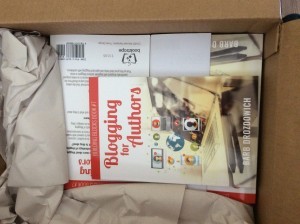
Here they are in the newly opened box…
I’ve been getting some great reviews so far:
I LOVED Blogging for Authors. AS much as Barb’s books have taught me, I learned more here. This book is for sure for more than authors new to blogging…I’ve been blogging since 2002 and I can see some things I want to change. ~ Cindy Harrison
I love Drozdowich’s friendly tone, far from that of a teacher at the front of a classroom, and her style in this highly technical content is readable and digestible. The detailed table of contents acts as an index, so I can easily find the nugget I need at any time in the future. All of Drozdowich’s books create a how-to library for authors, publicists, bloggers, and even online consumers … readers, we call them, who love to learn how it all works and how to “use” blogs better. This one is a rather large gold mine for authors who want to succeed at blogging. ~ Kay
I must admit Kay was one of my early beta readers. Because of her pages of suggestions, I took what I had at the time and ripped it to shreds. The book that I published is a completely different book than what she originally looked at and I’m happy to read her thoughts!
Enough for now. News next week about a boxed set that is now finished proofing and heading towards formatting! If you know of anyone who could be helped by today’s post, use the little share buttons below to share with them. Also, if you haven’t subscribed to my Tech Hints – please find the badge on the side. For now….got visit Anne and Ruth and say hi for me 
The post What to look for in technical help appeared first on Bakerview Consulting.
April 20, 2016
10 Tips for the Perfect LinkedIn Profile (Infographic)
I don’t know about you, but on my perpetual list of things to do is to master LinkedIn. It just doesn’t seem to give me the warm and fuzzies like other platforms – so this task keeps being moved to the bottom of the list.
I do seem to be quick to grab infographics like the one below to help me when I get my butt in gear! For the original post for this infographic, please read here.
The post 10 Tips for the Perfect LinkedIn Profile (Infographic) appeared first on Bakerview Consulting.
April 17, 2016
What are subscribers and why do you need them?
My kingdom for a subscriber…
To subscribe or not subscribe…

This past week I had an author ask me why she needed different types of subscribers? After a bit of questioning, I realized that she really wasn’t clear about a whole bunch of things from what was already set up on her account, to the differences between different types of subscriptions.
That brings me to today’s post. Let’s talk about subscribers….
It is possible for your readers to sign up for two different types of subscriptions:
They can subscribe to your blog posts
They can subscribe to your newsletter
Let’s talk about one at a time.
You want people to subscribe to your blog post so that these posts are delivered directly to them (usually by email). This removes all barriers to you sharing your thoughts with your readers. If your blog posts arrive in their inbox, they will likely at least glance at it – if not read the whole thing.
Subscribing to your blog post is an action that your readers have to take. You can encourage them to subscribe, but you shouldn’t add them against their will. This isn’t against any rules, but it’s guaranteed to piss off a bunch of readers if you do.
How does this take place? – There are a couple of common ways to offer subscriptions to your blog posts:
a) Jetpack (from WordPress) offers a subscription widget that you can put on your sidebar. On my book blog, it looks like the screenshot below:
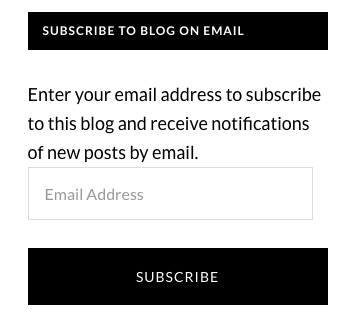
Fairly clear – enter an email address and click on subscribe.
b) Feedburner – although many say that Feedburner is no longer used, but I’ve had it in place on several blogs for years. It regularly delivers posts to subscribers.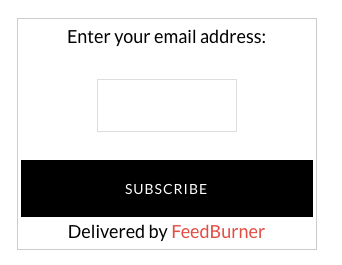
Again, this is fairly clear – the reader enters their email address and clicks on the subscribe button and they have been subscribed.
c) BlogLovin’ is a combination of a feedreader and subscription service that is popular amongst many groups of bloggers. To encourage subscription, a button like you see below, is put on the blog’s sidebar. Anyone who has a free BlogLovin’ account can read the blogs they subscribe to on the BlogLovin’ site. They also get an email reminding them when there are new blog posts to read.

I’m quite fond of BlogLovin’ personally and it is fairly popular on several sites that I manage.
There is a 4th choice for blog subscribers – using Mailchimp or something similar – but we’ll talk about that in the next section.
To summarize – You want readers to subscribe to your blog’s posts so that they get them reliably in their inbox. Blog subscription is something that you should be encouraging your readers to do. But…please don’t be overly helpful and signup your friends and neighbors without their permission.  You want to be creating a community not pissing people off. One last comment and that is regarding stats – since we have recently been learning about blog stats. People who read your blog posts through a subscription, likely don’t visit your blog and don’t count as a hit on your stats. The only way they would visit your blog is if your subscription is set up as an excerpt and then they need to go to your site to read the whole posts. Which do you have?
You want to be creating a community not pissing people off. One last comment and that is regarding stats – since we have recently been learning about blog stats. People who read your blog posts through a subscription, likely don’t visit your blog and don’t count as a hit on your stats. The only way they would visit your blog is if your subscription is set up as an excerpt and then they need to go to your site to read the whole posts. Which do you have?
You should be subscribed to your own blog so that you know what your readers are seeing!

Newsletters
As the experts suggest, every author should be gathering names/email addresses for readers interested in receiving a future newsletter. As I tell many of my new authors, it doesn’t matter if you have the nerve or the inclination to send out a newsletter at this point. You should be collecting names regardless…you know…for when you gather your courage and send out a note to them.
If you never collect names/email addresses, when you gather your courage to send out a note, you won’t have anyone to send to.
So…How do you tell the difference between a subscription to a newsletter and a subscription to a blog. The short answer is – sometimes with difficulty.
Let’s start with some basics. Generally speaking, emails for a potential newsletter are collected by a mail/newsletter service such as Mailchimp


There are many different mail/newsletter services. Some are free to a certain point, some are a paid service from the beginning. Just do a Google search and you will see the selection of companies available. Of all the choices, Mailchimp tends to be the most popular with authors and other beginning bloggers as they allow for 2000 subscribers before the paid version kicks in. This allows the creation of a decent following before paying.
I frequently have authors tell me that they don’t need a mail/newsletter service, they just send emails out from their regular email account. Remember, you are a professional and you are running a business. It is not a good idea to use your regular email account for newsletters because of the following:
can’t brand the emails
doesn’t comply with the CAN-SPAM act (my explanation here)- with fines of $16,000 per offense this is important
studies show that mail/newsletter services can reduce the number of emails that end up in spam folders rather than inboxes
Mail/newsletter services can be used to send out a branded blog subscriptions as well
Let’s talk about each point individually
Branding – you want to create the same look and feel across your platform so that your readers can tell at a glance where the information is coming from. Not too clear about why to brand a newsletter? I challenge you to subscribe to a couple of big name author newsletters and study what they send. Learn and apply
The CAN-SPAM act is serious. Offenses can carry of fine of $16,000.00 USD each. You can comply with the CAN-SPAM act using your usual email address, but it is more difficult/time consuming than when using a service.
As many as 35% of your emails (if sent out in large numbers) will end up in spam folders and some people have their email service (knowingly or unknowingly) set to automatically delete spam. So they never see what you are trying to share. This number will vary by your email provider and the receiver’s settings, but to me, 35% is a large number of my subscribers! I care about this!
As I mentioned above, it is possible to send out your blog posts to subscribers using a mail/newsletter service to do the delivery. I do this for several sites as it allows for branding of the note, but also allows me to include extra information as needed – announcements of new releases, special offers, etc. This information can be changed easily as needed.

Remember above I said that sometimes it is difficult to determine what is being signed up for. the graphic above is the default subscription widget as shown on one of my blogs from Mailchimp. It clearly says “Subscribe to my Newsletter.” As the owner of a blog/website, it is your job to ensure that people are clear what they are signing up for so that they can make an informed decision.
I hope this clears up some misunderstandings about subscriptions. Don’t hesitate to ask questions, and stay tuned for a short tutorial being created on using Mailchimp!
*****
I’d like to thank you for dropping by today! If you have a friend that would benefit from this post, please use the share buttons below to pass it on. I have created 25 or so videos to address sticky problems on blogs that I frequently get questions about. If you are interested in getting these videos or any of my posts delivered directly to your inbox, sign up for my Tech hints newsletter off to the right sidebar⇒
I’ve now re-worked and republished the four of my books. They were written in hopes of helping authors and bloggers. If they sound interesting, click on the covers and you will be taken to Amazon. For those of you who have been following along, The Book Blogger Platform was published a short time ago. In other news, ‘Blogging for Authors’ has been released and is available on Amazon and other retailers. Click on the cover below to purchase.
Secondly in news – I’m almost finished the analysis of the survey of book bloggers – expect something from that front soon!
The post What are subscribers and why do you need them? appeared first on Bakerview Consulting.



